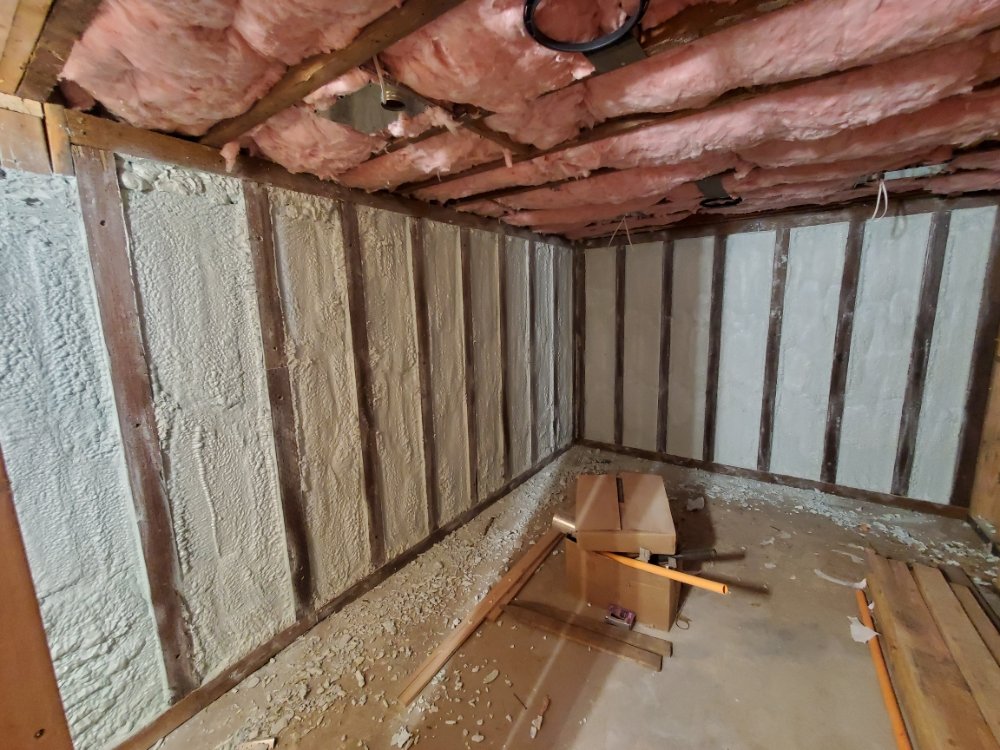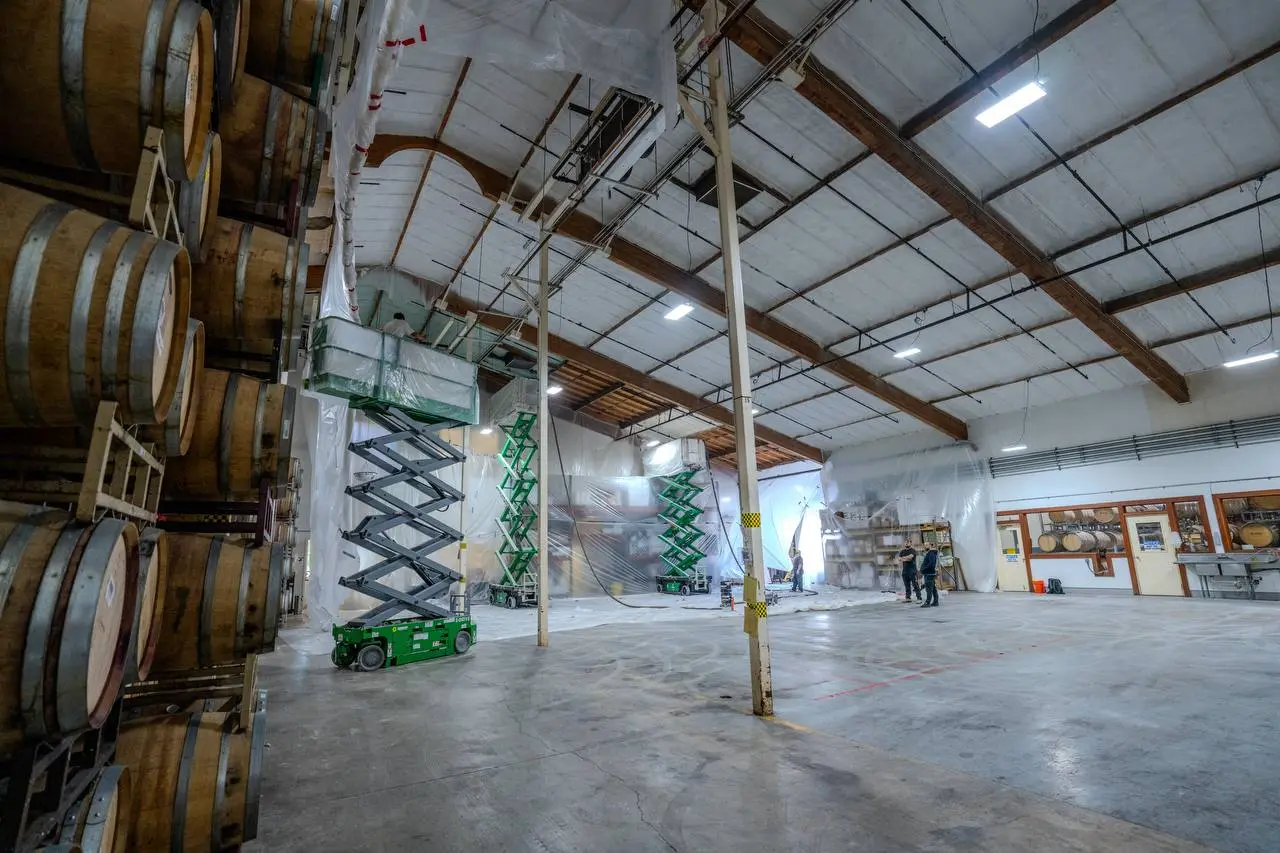Air Sealing & Insulation to Pass Title 24 in 2025–2026 - A Practical Guide
11/13/2025 2:30 AM
.jpg)
Proper air sealing and insulation are critical for passing Title 24 requirements in California.
If you're building or remodeling in California right now, you've probably felt it: Title 24 is no longer just a checkbox. Inspectors, HERS raters, and plan checkers are paying close attention to how your building is sealed, insulated, and documented - not just the R-value printed on the bag.
The upside? When you get air sealing and insulation right, you don't just "pass code." You build quieter, healthier, more comfortable homes with lower bills and fewer callbacks. And it's usually cheaper to do it right the first time than trying to fix things later with bigger HVAC systems, more solar panels, or last-minute change orders.
This guide walks you through - in plain English - what it actually takes to pass Title 24 in 2025–2026 using smart air sealing and insulation strategies.
Key Takeaways
-
Title 24 requires proper envelope air sealing on all new low-rise residential projects (and many additions/alterations). You can't offset a leaky shell with solar panels or efficient HVAC and call it done—the mandatory measures still apply.
-
Quality Insulation Installation (QII) and verified air sealing can add crucial performance credit in your energy model and are often the simplest way to gain margin without expensive upgrades elsewhere.
-
Under the performance path, tightening the envelope toward ≤ 5 ACH50 (air changes per hour at 50 Pascals) can significantly improve your modeled results; leaky homes at 7–15+ ACH50 struggle to comply.
-
Done right, air sealing + high-quality insulation routinely cuts heating and cooling loads by about 20–40%, consistent with DOE and CEC research on infiltration and envelope performance.
-
Spray foam and well-designed hybrid systems (foam + batts/blown-in) make it much easier to achieve a continuous air barrier, high effective R-values, and QII-level installs than "fluff-only" jobs that rely on perfect membranes.
-
USA Spray Me works as your envelope partner—not just an installer: we design, seal, insulate, coordinate with HERS, and help you pass Title 24 the first time.
Get Your Free Quote
Fill out the form below for instant pricing
Understanding Title 24
Title 24, Part 6 is California's energy code - the rulebook for how efficient your building must be. For your building envelope, three things matter most.
Mandatory Requirements: The Non-Negotiables
These are the rules you can't skip, even if you're using the performance path. They include air sealing at specific locations, minimum insulation levels with proper placement, and basic duct sealing along with other envelope details. Think of these as the foundation - without them, nothing else matters.
The Prescriptive Path: Follow the Recipe
This is the cookbook approach. You follow specific R-values and measures based on your climate zone. It's simple and straightforward, but it doesn't give you much flexibility. If your project has unique features or you want to optimize costs, this path can feel limiting.
The Performance Path: Trade and Optimize
Most custom homes and higher-end projects use this route. You model your design using approved software like CBECC-Res, and you can trade measures - better shell for smaller HVAC, for example - as long as your building performs as well as the "standard design." This gives you flexibility, but here's the catch: you can't model your way out of a bad envelope.
A leaky, sloppily insulated building raises heating and cooling loads, shrinks your compliance margin, triggers comfort complaints and callbacks, and risks failing HERS verification. A good envelope makes modeling easier, inspections smoother, and homeowners happier.
What "Air Sealing" Really Means Under Title 24
"Yeah, we seal." Cool. But can you show it?
Title 24 expects a continuous air barrier around the conditioned space - not just random foam where someone saw daylight. This means creating an unbroken line of protection that keeps conditioned air inside and unconditioned air out.
Critical Locations That Need Sealing
The devil is in the details, and inspectors know exactly where to look. Top and bottom plates at ceilings and floors need attention, especially where walls meet the attic. Rim and band joists are classic hidden leak paths between floors and at floor-to-foundation transitions.
Attic penetrations are a major concern - can lights, fans, bath vents, plumbing stacks, electrical penetrations, flues, furnace platforms, and supply or return boots all need proper sealing. Don't forget about chases and dropped soffits, including shaft walls, plumbing and electrical chases, and open framing pockets.
Attic hatches and pull-down stairs must be weatherstripped and insulated. The garage-to-house assembly - walls, ceilings, and penetrations between garage and living space - is another area inspectors scrutinize. Knee walls and side attics need their back sides sheathed and air-sealed, not just left with exposed insulation facing the wind.
Tub and shower backs on exterior walls should be boxed and sealed, not left wide open. And windows and doors need gaps at rough openings sealed properly - not just foamed "somewhere near it."
Materials That Actually Count
Not all sealing materials are created equal in the eyes of Title 24. High-quality caulks and sealants form the foundation of any good air sealing strategy, working alongside gaskets and weatherstripping to create tight seals at critical junctions. Mastic remains the gold standard for duct sealing, while one- and two-component spray foam excel at filling irregular gaps and creating robust air barriers.
Air-sealing tapes - whether acrylic or butyl - must be installed strictly according to manufacturer specifications to maintain their long-term performance. Fully-adhered or liquid-applied membranes offer excellent protection when properly integrated into the building envelope. Code-compliant spray foam assemblies have become increasingly popular because they serve double duty as both insulation and air barrier, simplifying the construction process while delivering reliable performance. The key is using the right material in the right place and installing it correctly.
What Inspectors Catch Every Time
Some mistakes show up on nearly every failed inspection. Leaky can lights and whole-house fans are common culprits. Open chases that lead straight into the attic are another red flag. Unsealed garage-to-living separations, knee walls that are "insulated" but not air-sealed, and rim joists stuffed with loose fiberglass all fail inspection.
Attic hatches with no gasket or insulation are easy catches for inspectors. Remember the golden rule: insulation stuffed into a hole does not equal air sealing. You need both working together - an air barrier plus insulation.

Spray foam insulation provides both high R-value and excellent air sealing in one application.
Insulation Levels That Actually Matter
While you should always check your exact climate zone and compliance documents, here are typical Title 24-aligned targets as a working guide:
Attics: R-38 minimum, R-49+ common in performance designs
2×6 Above-Grade Walls: R-21 cavity, or R-13 + exterior continuous insulation
Floors Over Unconditioned: R-19 to R-30, depends on assembly
Roofs/Unvented Assemblies: Must meet U-factor/R-value rules plus condensation control
Rated vs. Effective R-Value: The Reality Gap
The code model assumes proper installation. Real life often doesn't deliver. Several things can destroy your effective R-value, and they're more common than you'd think.
Gaps and voids - anything over 2% becomes a QII issue. Batts that are folded, jammed, or compressed lose performance. Wind-washing at eaves can cut R-value dramatically. Missing backing on knee walls and air leaking through or behind the insulation all reduce real-world performance.
Here's a sobering example: R-30 batts with a sloppy install can behave like R-20 to R-24 in reality. That kills your compliance margins and your homeowner's comfort.
QII & Blower Door: The Quiet Power-Ups
You're not required to do QII or blower door testing on every project - but using them strategically makes Title 24 compliance much easier.
Quality Insulation Installation (QII)
QII is verified by a HERS rater and confirms several critical factors: full contact with the air barrier, no big gaps or voids, correct fit around obstacles, no compression, and proper supports. Getting QII certification gives you a performance credit in the model and assurance that the shell isn't garbage.
Blower Door Testing: The Numbers That Matter
Blower door testing measures ACH50 (air changes per hour at 50 Pascals). Here's what the numbers mean in practice:
≤ 5 ACH50: Earns you a strong performance boost for single-family homes
3–5 ACH50: Very solid - comfortable, efficient, and realistic with good detailing
1–3 ACH50: High-performance or net-zero territory, very achievable with spray foam or robust hybrid systems
In the real world, you'll typically see 7–15+ ACH50 in leaky older homes or bad installs. Code-minimum with basic sealing usually lands around 5–7 ACH50. Good practice gets you to 3–5 ACH50, and foam or hybrid systems done right can hit 1–3 ACH50.
The tighter your envelope, the easier it is to pass modeling, the smaller your HVAC can be, and the happier your occupants will be. USA Spray Me designs to specific blower door targets and coordinates with your HERS rater so this doesn't become a game of "find the leaks" at the end.
Best Materials & Assemblies for Title 24 Success
Let's talk strategy, not sales pitches. Each material can work - if you understand its role and use it correctly.
Spray Foam: The Heavy Hitter
Closed-Cell Spray Foam (ccSPF)
Closed-cell foam delivers R-6.0 to R-7.0 per inch and acts as both an air barrier and vapor retarder while adding structural rigidity. It's perfect for unvented or conditioned attics, rafter bays with limited depth, rim joists and band joists, problem transitions, and metal buildings or below-grade applications, especially in coastal or marine exposure areas.
Open-Cell Spray Foam (ocSPF)
Open-cell foam provides R-3.5 to R-3.8 per inch, serves as an air barrier, remains vapor-open, and excels at sound control. It's ideal for conditioned attics, interior walls, and complex rooflines where sound dampening matters.
Why Title 24 Loves Foam (When Done Right)
Spray foam provides built-in air sealing, which means better ACH50 results without gymnastics. It delivers gap-free fill, achieving QII-level execution by default. The high R-value per inch solves tight assembly challenges, and it creates cleaner details at penetrations and transitions.
Blown-In Cellulose & Fiberglass: Budget-Friendly, Detail-Sensitive
Blown-in insulation works great for large attics and some retrofits, but only when you air seal first, use proper depth and density, install baffles at eaves, and control wind-washing.
The advantages are clear: lower cost per square foot, good coverage in open attics, and cellulose adds sound control while using recycled content. But there are important cautions. Blown-in materials are not air barriers - you must provide one separately. Settling can occur, especially with cellulose if it's under-dense, and performance drops fast with sloppy installation.
Mineral Wool: The Fire & Sound Specialist
Mineral wool delivers R-3.7 to R-4.3 per inch in a dense, non-combustible, water-resistant package. It's best for WUI (Wildland-Urban Interface) zones like the Oakland Hills or Marin, party walls, floor-ceiling assemblies, and projects prioritizing acoustics plus fire safety.
Keep in mind that mineral wool requires separate air and water barrier layers, and skilled fitting is essential since the material is heavier and stiffer than alternatives.
Hybrid Systems: The Smart Money Move
Some of the most bulletproof Title 24 designs use combinations of materials. Flash-and-batt systems use 1 to 2 inches of closed-cell foam for air and vapor control, then add batts for R-value. Another approach uses foam at critical points plus blown-in insulation in open areas - seal the hard stuff, save money on the easy stuff.
Foam at the roof deck combined with other methods elsewhere creates a conditioned attic while allowing simpler wall assemblies. The result? Strong blower door numbers, solid R-values, and controlled costs.
This is where USA Spray Me shines: tuning the mix so you're not overpaying for performance or gambling with compliance.
What Inspectors & HERS Raters Actually Look For
If you want clean sign-offs, design and build with these expectations in mind.
Inspectors want to see a traceable air barrier line on drawings and in real life. They'll check that critical locations are sealed: top plates, penetrations, chases, attic access, garage wall and ceiling, and rim joists.
Your insulation needs to fully fill cavities, contact the air barrier, be cut around boxes and pipes (not crushed), and be properly supported with no sagging. Attic ventilation and baffles must be installed correctly.
Ducts should be sealed and insulated, or moved into conditioned space via foam at the roof deck. Have your documentation ready: product specs, photos taken before drywall, and HERS forms for QII and blower door testing.
Do this, and inspections become boring - in the best way.
Common Mistakes That Blow Compliance (and Budgets)
Blowing insulation over leaks is a classic mistake. New insulation on top of an unsealed ceiling looks pretty but tests horribly. Ignoring can lights and chases - leaving recessed lights, fans, and vertical shafts open to the attic - is another frequent failure.
Leaky garage separations happen when there's no sealing at drywall joints or penetrations. Lazy batt installation with gaps, folds, and compression everywhere destroys performance. Random foam jobs using the wrong type or thickness, with no ignition barrier or vapor strategy, fail inspection.
Perhaps the worst mistake is having no plan at all - hoping the HERS rater will "make it work" after drywall is up. Every one of these problems is more expensive to fix later than to do right once.
The USA Spray Me Approach: We Don't Just Spray. We Help You Pass.
You don't need another trade who "just does their piece." You need someone who understands how the envelope, Title 24, and inspections all connect.
Before You Build
We review plans for air barrier continuity and flag problem transitions early. We recommend assemblies - foam, hybrids, or blown-in - that meet R-values, hit target ACH50, and work for your climate zone and budget. We coordinate with your architect, GC, Title 24 consultant, and HERS rater.
During Construction
We provide professional air sealing at all mandated locations and install correct, code-compliant spray foam and blown systems. We use HFO-based foam with low GWP and proven performance, install proper baffles, dams, and clearances, and deliver clean, documented work with photos included.
At Verification
We support QII inspections, help prep for blower door testing (and fix minor leaks if needed), provide product data and install records, and stand behind the work with warranties.
We're in the business of passing on the first try - with real performance behind the paperwork.
USA Spray Me is an insulation company based in San Francisco and serving Northern California. Our expert technicians specialize in Title 24-compliant envelope assemblies that pass inspection and deliver real-world performance.
Get Expert Title 24 Guidance →Frequently Asked Questions (FAQ)
Here you'll find answers to the questions we get asked by our clients.
You really need it. Title 24 mandates specific air sealing measures, and research consistently shows uncontrolled air leakage can account for roughly 25–40% of heating and cooling losses in leaky homes. Insulation slows heat; air sealing stops the draft. You need both.
For most single-family projects in 2025–2026, aim for 5 ACH50 or better to earn credit. A range of 3–5 ACH50 is very solid and achievable with good detailing. High-performance projects can hit 1–3 ACH50, which is common with spray foam or hybrid systems. We typically design for the 3–5 range (or tighter) so you have margin instead of stress.
Not automatically - but when installed correctly by a qualified contractor, it makes compliance much easier. It offers high R-value per inch, built-in air sealing, cleaner details at transitions, and strong blower door results. It still must meet thickness, ignition barrier, and documentation requirements.
Yes, but you'll work harder. Meticulous air sealing is mandatory, batts must be perfectly installed to meet QII and modeled R-values, and blower door results are less predictable. If you're going batts-only, we strongly recommend QII and a disciplined air sealing plan.
QII (Quality Insulation Installation) is a HERS-verified checklist confirming your insulation isn't hacked in. It provides valuable performance credit and protects you from "R-19 in name only" installs. On most projects, yes - it's worth it.
All the time. We're happy to plug into your architect/GC/HERS process early so the envelope is clear on paper and clean in the field.
Contact us to discuss your Title 24 project.





